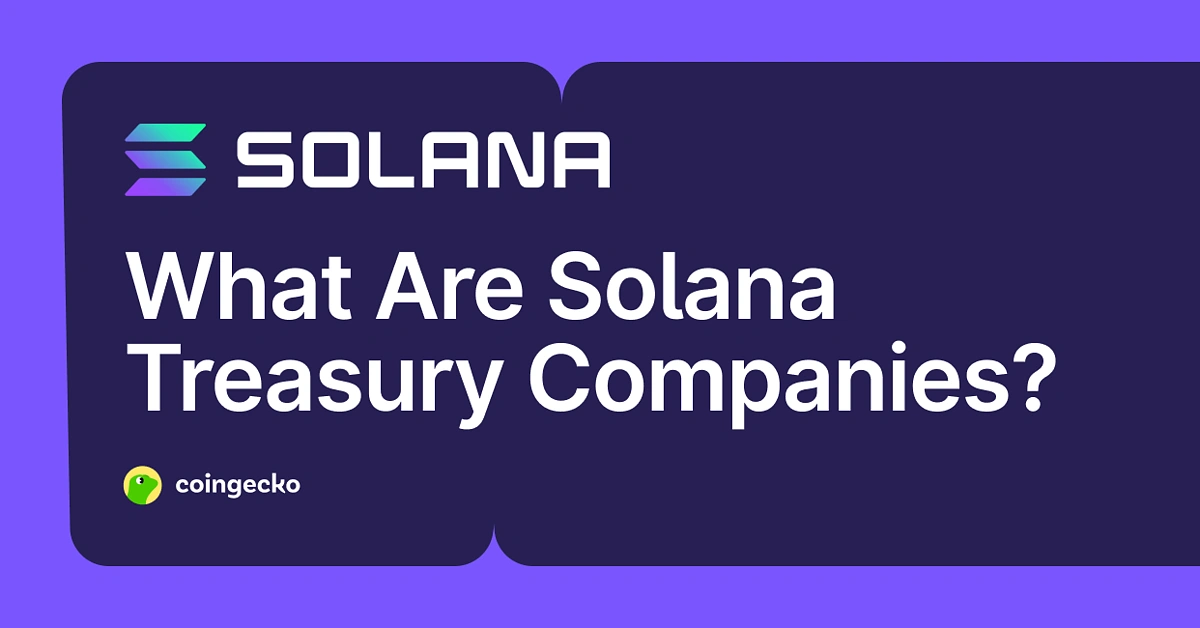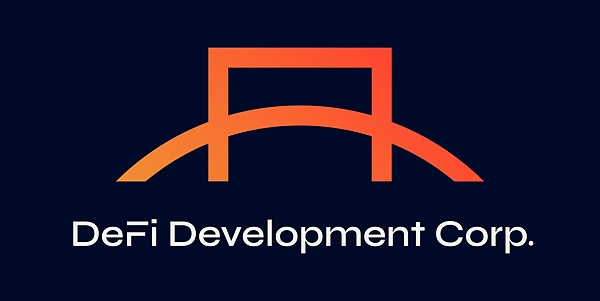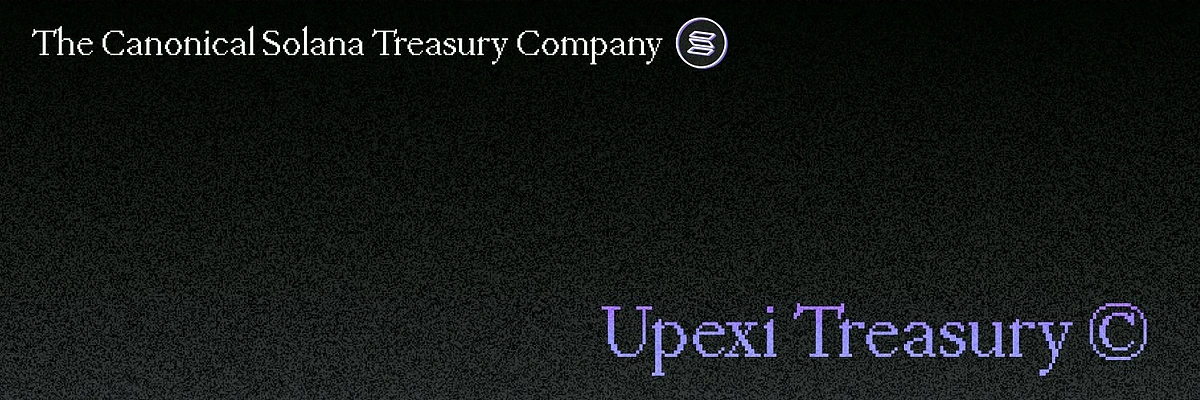What Are Solana Treasuries?
Solana treasuries are corporate strategies where companies hold SOL on their balance sheets with the aim of benefitting from long-term price appreciation and earning from SOL staking rewards.
Key Takeaways
-
Solana treasuries turn corporate reserves into productive assets by combining price exposure with staking yields, validator revenues, and liquid staking flexibility.
-
Adoption is still early but accelerating, with companies such as Forward Industries, DeFi Development Corp, Upexi, and Sharps Technology showing diverse strategies that signal growing institutional interest.
-
Solana treasuries still face obstacles but the rapid expansion of Solana’s ecosystem could drive companies to add SOL to their balance sheets in the years to come.

While Bitcoin’s adoption into corporate balance sheets has been in the spotlight, several companies have begun holding Solana’s native token, SOL, in their treasuries. These developments signal that public companies are looking to leverage a higher-growth ecosystem since Solana is known as a blockchain built for speed, scalability, and programmability. Companies that have adopted Solana treasuries aim to gain exposure to a growing dynamic crypto asset while differentiating themselves in the marketplace.
Accumulating SOL not only brings benefits from potential long-term price appreciation but also from staking yields. Since Solana operates on a Proof-of-Stake consensus mechanism, holders are able to earn yield by staking, or locking up, their tokens to help secure the network. Companies are not only buying SOL but also staking it to earn additional rewards, while also strengthening the blockchain’s decentralization.
How Companies Implement Solana Treasury Strategies
The companies that have built Solana treasuries have not followed a single blueprint but are instead using different implementation methods that reflect a mixture of risk, return, and operational complexity.
Direct SOL Purchase and Staking
The most straightforward method is through direct token purchases followed by staking. In this model, companies raise capital or reallocate balance sheet cash to acquire SOL on the open market then commit those tokens to Solana’s network to generate yield.
It provides exposure to SOL’s potential price appreciation while also creating a recurring income stream from staking rewards which typically range from 6-8% annually. For example, Upexi is staking nearly all 2 million SOL in its holdings to earn an estimated $65,000 per day.
Validator Operations Model
Companies can also implement Solana treasuries by operating or partnering with validator nodes in order to secure the network and earn staking rewards. Unlike simple token staking through third-party providers, this model provides more direct control over infrastructure and higher potential yield.
SOL Strategies, a Solana treasury company holding over 370,000 SOL, has scaled its validator operations significantly, with 3.6 million SOL under delegation from its own treasury and third-party wallets as of August 25, 2025. The company has also attracted over 7,000 unique wallets to its validator network, including institutional mandates such as ARK Invest’s Digital Asset Revolutions Fund.
Liquid Staking Integration
Liquid staking is the process of companies staking SOL to earn rewards while receiving Liquid Staking Tokens (LSTs) in return. These LSTs preserve liquidity by allowing the staked position to be traded, borrowed against, or redeployed into other yield strategies. This model enhances capital efficiency since companies can compound rewards.
DeFi Development was the first publicly traded company to adopt this approach with dfdvSOL in partnership with Sanctum. The company is able to earn staking income while maintaining liquidity and creating a more flexible balance sheet structure.
Governance and Operational Framework
Companies can implement Solana treasuries by establishing a clear governance and operational framework to manage holdings effectively. Some companies have started to formalize governance structures to emphasize how decisions are made, how performance is measured, and how risks are managed.
For example, DeFi Development regularly publishes updates on its SOL Per Share (SPS) metric to align treasury growth with shareholder value. Meanwhile, SOL Strategies publishes financial statements that detail both treasury value and validator revenue. Upexi integrates this method by disclosing staking yields and net asset value (NAV) multiples to investors.
Top Publicly Traded Companies Holding SOL
The top four publicly traded companies with Solana treasuries hold almost 13 million SOL altogether in their treasuries as of mid September 2025.
Forward Industries (FORD): SOL Treasury Leader

Forward Industries is a diversified company previously known for providing cases for medical and consumer electronics. Now, it has become the newest company to pivot to a Solana treasury alongside various strategies to create value within the ecosystem. While it might be the latest company to make this pivot, it has already cemented its position at the top of the list.
After completing its $1.65 billion private investment in public equity (PIPE) on September 11, 2025, the company wasted no time to purchase 6,822,000 SOL for a total cost of approximately $1.58 billion. The PIPE financing was led by investors Galaxy Digital, Jump Crypto, and Multicoin Capital. Additionally, Kyle Samani from Multicoin Capital, Christopher Ferraro from Galaxy, and Saurabh Sharma from Jump Crypto hold positions on the Board of Directors of Forward Industries.
The company’s strategy is focused on acquiring SOL and deploying it via staking, lending, and other various DeFi activities to generate revenue that will then be used to acquire more SOL.
DeFi Development Corp (DFDV): Liquid Staking and Validator Partnership

DeFi Development Corp. (DFDV) has structured its Solana treasury around infrastructure integration and yield optimization. The company recently expanded its holdings to over 2 million SOL worth more than $511 million following SOL’s price of $244 at time of writing The SOL accumulation was funded in part by a $125 million equity raise.
One distinguishing factor of DFDV is its adoption of liquid staking token (LST) technology through dfdvSOL, a liquid staking token developed in partnership with Sanctum. It is the first publicly traded company to incorporate Solana-based LSTs into its treasury, allowing it to compound staking rewards while preserving liquidity. The company has optimized a looped staking strategy to optimize its returns and earns approximately 12% in yield this way.
Beyond staking, DFDV has also established a validator node collaboration with Bonk to deepen staking capacity as well as a strategic agreement with Solflare to become the official Solana wallet provider for DFDV’s initiatives. This structure transforms DFDV’s treasury into a hybrid of balance sheet exposure and ecosystem infrastructure play.
Upexi Inc (UPXI): SOL Treasury Leader

Leading the Solana treasury adoption is Upexi Inc. (UPXI), a Tampa-based consumer products company that has made one of the most aggressive corporate moves into Solana. It has built a treasury of more than 2 million SOL worth over $492 million following SOL’s $244 price at time of writing. The company began accumulating earlier in the year after announcing a $100 million raise dedicated to SOL purchases. Later on, this was expanded through a $200 million follow-up raise and a $500 million credit line.
After unveiling its Solana treasury strategy, Upexi’s share price surged more than 330%, signaling that investors see the company as a high-growth proxy for direct exposure to SOL.
Upexi stakes nearly all of its holdings and generates approximately 8% in yield, or about $65,000 a day in revenue. On top of that, about 57% of the company’s SOL was bought as locked tokens at a discount of around 15% compared to the market price, giving shareholders immediate built-in gains once those tokens unlock.
Sharps Technology (STSS): Institutional Partnerships

Adding further momentum to Solana’s treasury adoption is Sharps Technology, Inc. that recently unveiled one of the most ambitious strategies. Known as a medical device manufacturer, the company has pivoted part of its strategy into a Solana treasury. Heading the new treasury strategy are Alice Zhang as Chief Investment Officer and James Zhang as Strategic Advisor, both having deep ties to the Solana ecosystem.
On August 25, 2025, Sharps announced it had secured over $400 million private placement backed by investors including ParaFi, Pantera, and FalconX. Then on September 2, 2025, it was announced that the funding was used to purchase more than 2 million SOL for long-term holding and staking income. Additionally, Sharps has signed a non-binding letter of intent with the Solana Foundations to secure the purchase of $50 million of SOL at a 15% discount to a 30-day time-weighted average price.
To further deepen its involvement in the Solana ecosystem, the company intends to stake a portion of its SOL to BonkSOL, BONK’s liquid staking token (LST) product. Adding to that is a collaboration with Pudgy Penguins to jointly drive exposure and create new interaction opportunities for users.
Advantages of Solana Treasuries
Solana treasuries offer companies exposure to Solana’s fast-growing ecosystem where they can combine potential asset appreciation with additional income streams.
High Staking Yields
Unlike Bitcoin, SOL can be staked to earn annual yields of around 6-8% which creates a predictable income stream. For companies, this turns a volatile asset into one that can also generate ongoing returns.
Upexi provides a clear example through its strategy of staking nearly all of its 2 million SOL treasury to earn around $65,000 per day or roughly $23-27 million annually. This income not only helps to offset SOL’s price volatility but also positions Solana treasuries as a more dynamic reserve strategy.
Growing Solana Ecosystem and Network Effects
Solana has established itself as a leading blockchain for high-throughput applications including decentralized finance (DeFi), non-fungible tokens (NFTs), and tokenized assets. The blockchain has seen meaningful growth in DeFi Total Value Locked (TVL) and earned its position among the top blockchains for on-chain liquidity and capital deployment.
This enhances the utility of SOL treasuries since staked or held SOL can be more easily integrated into DeFi through lending, collateralization, or liquid staking. At the same time, Solana’s mature infrastructure helps to reduce friction treasury operations and allows companies to participate more actively in the network.
Operational Treasury Benefits
A defining advantage of Solana treasuries lies in their operational benefits, which go beyond the passive nature of Bitcoin holdings. Whereas a Bitcoin treasury primarily depends on price appreciation, a Solana treasury can actively generate yield through staking, providing companies with a recurring revenue stream. This yield component effectively turns treasury reserves into a productive asset.
By running validator nodes, companies can capture additional revenues on top of staking rewards. This operational layer strengthens alignment with the Solana ecosystem and offers diversification beyond just potential token appreciation.
LSTs such as dfdvSOL allow the company to stake SOL while keeping positions liquid, enabling them to redeploy capital or use staked assets as collateral. Companies can also retain the option to exit positions more easily by converting or trading LSTs, reducing liquidity risk. This provides flexibility and capital efficiency compared to traditional staking.
Smaller Market Cap With Higher Growth Potential
Another advantage to investing in Solana is that SOL still has a smaller market cap than Bitcoin and Ethereum which gives it more room to grow. While this makes it more volatile, it also means that new investment and adoption can have a bigger impact on its price. For companies, holding SOL is not just about having a reserve asset, it’s also a way to capture potential high-growth upside as Solana continues to expand its role in DeFi, NFTs, and tokenized assets.
Solana vs. Bitcoin vs. Ethereum Treasury Comparison
Here are a few factors to consider when comparing Bitcoin, Ethereum, and Solana treasuries.
|
Bitcoin (BTC) Treasuries |
Ethereum (ETH) Treasuries |
Solana (SOL) Treasuries |
|
|
Adoption by Public Companies |
Widest adoption (Strategy, Tesla, Marathon) |
Newest entrant, but growing (Forward Industries, Upexi, DFDV) |
|
|
Primary Use Case |
Long-term reserve asset like a “digital gold” |
Reserve + staking to earn ETH rewards |
Reserve + staking + validator operations + liquid staking |
|
Yield Opportunities |
None natively (BTC is non-productive) |
Staking yield typically 3–5% |
Staking yield typically 6–8% + validator revenue + liquid staking flexibility |
|
Liquidity of Staked Assets |
Not applicable |
Staked ETH through liquid staking providers |
Staked SOL often liquid via validators; LSTs maintain liquidity |
|
Treasury Models in Practice |
Direct accumulation and holding (NAV-driven) |
Direct accumulation + staking; some firms experiment with validator nodes |
Direct accumulation, staking, validator operations, liquid staking integration |
|
Key Metrics Used |
BTC per share; NAV vs. market cap |
ETH staked; validator yield; NAV |
SOL per share (SPS); NAV multiples; staking and validator revenue disclosure |
|
Risks |
Volatility, limited yield, regulatory uncertainty |
Volatility, smart contract and validator risks, evolving staking dynamics |
Higher volatility, operational risk (validators), protocol risk |
|
Investor Appeal |
Conservative crypto reserve strategy |
Balanced approach with exposure to ETH’s role in DeFi plus staking income |
Aggressive, multi-layered ROI with exposure to SOL appreciation, staking, infra revenues |
Challenges Facing Solana Treasuries
Solana treasuries also bring challenges that companies need to manage ranging from high price volatility to operational risks from validator infrastructure.
Regulatory Uncertainty
Unlike Bitcoin, there is still no definitive U.S. regulatory classification for Solana. This creates legal and reporting risks that may affect how treasuries are valued or accounted for. It can also expose companies to enforcement actions if regulations tighten. Therefore a company should plan for enhanced legal review of securities-law exposure, conservative disclosure about risks, and flexible operational setups that can adapt if the regulatory posture changes.
Validator Slashing and Operational Risks
Operating validators also adds a layer of risk and responsibility for companies managing Solana treasuries. The most direct risk comes from slashing penalties, which occur if a validator is found guilty of double-signing or other malicious activity. Although routine downtime on Solana typically results in lost rewards, misconfigured or compromised validators can still expose staked assets to penalties.
Beyond that, running validators requires 24/7 infrastructure maintenance since validator downtime translates quickly into missed rewards. This means treasury operators need specialized technical expertise in DevOps, security, and monitoring to ensure continuous uptime, manage software upgrades, and mitigate risks. This model also introduces significant hardware and operational costs which include high-performance servers, monitoring tools, and specialized personnel.
FASB Fair Value Accounting Volatility
In December 2023, the Financial Accounting Standards Board (FASB) issued ASU 2023-08, a new accounting standard for crypto assets that took effect in 2025. The rule requires public companies to measure qualifying crypto holdings at fair value with changes recognized in net income.
For treasury managers, this introduces several implications including quarterly earnings volatility since SOL’s price swings will flow directly through the income statement rather than being held at historical cost. During bull markets, this can inflate reported earnings, but in downturns, it can generate sharp paper losses that weigh on quarterly results. Even if long-term conviction in SOL remains, short-term market declines can compress reported net income, potentially unsettling investors unfamiliar with digital asset volatility.
It also adds more complex reporting requirements, as companies must track fair value adjustments each reporting period and provide expanded disclosures on valuation techniques and crypto-specific risks.
Market Volatility and Limited Risk Management Tools
Another risk with Solana treasuries is their exposure to higher market volatility compared to Bitcoin. SOL remains more volatile due to its smaller market capitalization, faster growth profile, and sensitivity to network or ecosystem shocks.
While Bitcoin benefits from deep institutional hedging markets, including Chicago Mercantile Exchange (CME) futures, spot ETFs, and a wide range of structured products, Solana’s toolkit is still developing. CME launched Solana futures in March 2025, providing an initial step toward institutional adoption, but liquidity remains thin and usage is limited compared to Bitcoin and Ethereum contracts.
Outside of CME, most SOL derivatives are concentrated on crypto-native exchanges with lower liquidity and limited regulatory oversight. Structured products such as covered calls or volatility hedges are also scarce, leaving companies with Solana treasuries more directly exposed to price swings and without the breadth of institutional-grade risk management options available for more established assets.
How to Invest In Solana (SOL) for Exposure
As investors, there are a few methods for mainstream investors to gain exposure to SOL.
Direct Stock Investment in SOL Treasury Companies
One of the most straightforward ways is by investing directly in the public companies that hold large SOL reserves. Companies such as Forward Industries, Upexi, and DeFi Development have positioned themselves as publicly traded vehicles for Solana exposure.
Buying shares in these companies gives investors indirect access to SOL price movements, staking yields, and treasury growth, but in a regulated equity format that can be held in traditional brokerage accounts.
ETF and Fund Options
As of mid-2025, there is no approved spot Solana ETF in the U.S., though proposals from VanEck, 21Shares, and Bitwise are pending. In contrast, Canada lists spot Solana ETFs with staking, such as 3iQ’s product on the Toronto Stock Exchange, while Europe offers Solana ETPs like the Bitwise Solana Staking ETP. Global crypto funds also provide SOL exposure within broader proof-of-stake baskets.
Risk Considerations for Retail Investors
Solana treasuries carry higher risks since SOL is more volatile than Bitcoin or Ethereum, institutional hedging tools are limited, and some treasury firms rely on capital raises that can dilute shareholders. Regulatory uncertainty over SOL’s classification adds further complexity, and equity exposure does not fully protect investors from the token’s volatility.
Portfolio Allocation Guidelines
Due to its volatility and regulatory uncertainty, Solana is often viewed as a speculative, growth-oriented asset. In the context of treasuries, it is generally seen as a complement to more established holdings like Bitcoin or traditional investments, rather than a replacement.
Conclusion
The rise of Solana treasuries marks a new chapter in corporate adoption of digital assets, moving beyond Bitcoin’s passive reserves into more dynamic, yield-generating strategies. Companies like Upexi, DeFi Development Corp., SOL Strategies, and Sharps Technology have each carved out distinct approaches that demonstrate the versatility of Solana as a treasury asset.
The momentum is likely to continue since Forward Industries just launched its own Solana treasury strategy with a $1.65 billion PIPE, catapulting it to becoming the largest Solana treasury overnight. This indicates that we are still in the early stages of this trend and as Solana’s ecosystem continues to expand, it is likely that more publicly traded firms will follow.
